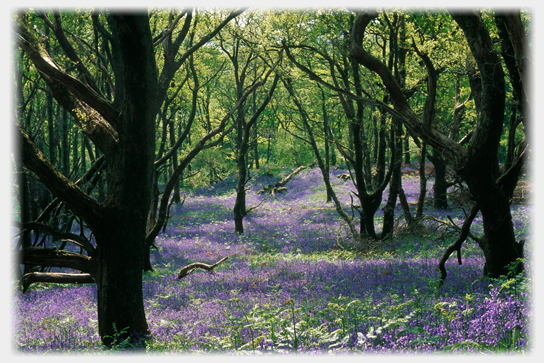
|
Illusive Beauty
From its birth photography has been allied to beauty, so much so that the word used in the patent, taken out by the inventor of the negative Fox Talbot, was 'calotype' from the Greek kalos–beautiful or fine. And the history since that time, is characterised by Sontag as "...the struggle between two different imperatives: beautification, which comes from the fine arts, and truth-telling, which is measured...by a notion of value-free truth..." stemming from science and journalism. (Sontag, 1977) Just as art constantly refers us back to notions of beauty, so does its progeny–photography. Photographs revel in finding beauty, rendering their objects finer, nobler, prettier, stronger, more spectacular, than at other times they seem. Photographs repeatedly seek to delight our aesthetic sense.
In this aim photograph goes one step further than the fine arts, it offers to capture for us the beauty we encounter, and let us take it home with us. Walking in the woods and savouring their delight, we try to net the experiences with our cameras, later to relive the charm. Memory is so manipulated with the help of our catch. Capture offers us a control that the changing world denies, letting us keep what we want. But here already we might feel deflected from the question–what is beauty? The history of the concept of beauty is strewn with such diversions, repeatedly the enquiry seems to turn to considering our response to beauty: to psychologising. Often consideration is given to our love of the beautiful, the inspiration it generates, or pleasure it delivers. After three millennia of writing on the subject we seem remarkably little the wiser, and may feel a little fobbed off.
What is the beauty in a beautiful picture? Accounts range from those, like Hume, who say it has nothing to do with the object: "Beauty is no quality in things themselves: It exists merely in the mind which contemplates them..." (Hume, 1757) To those with Augustine who assert that it is not that things are beautiful because they give delight, but rather that they give delight because they are beautiful. In general some option which melds these objective and subjective approaches has been preferred over the centuries. More recently Wittgenstein has offered an alternative view of aesthetics which stresses that context and viewpoint are all important; that there may not be anything to be encapsulated: beauty may echo barely conscious abstractions, or endorse the appropriateness of an agricultural instrument; it may be the spell cast by a lover, or the elegance of the solution to a mathematical puzzle. Maybe the apparently simple question has beguiled us, and we have forgotten that language is evolving and creative; words reflect this complexity.
Photography too, as a modern art, is evolving. The beauty we may find in it does not have a fixed address as it did for its creators. Now we are free to see the rose as a construct bearing only subjective beauty, or share the specific delights of exotic landscapes with our friends, or wonder at a sunset whose home is in our hearts. Certainly beauty is a label like good, used to show approbation and draw attention, but do we not hanker for more? What is the beauty which warms my heart and begs for a richer explanation?
While we may be dissatisfied with Plato's answer, at least he, as so often, assays the problem. He proposed that beauty is neither subjective, nor does it objectively adhere in things themselves, but rather, just as light from the sun shapes our view and reminds us of the sun, so an object can have a part of the Form of beauty and remind us of that Form. The local object is transitory, defective, insubstantial compared to the Form, but it serves to jog our memories and induce us to remember the Form which we then can dimly recollect. This explanation is similar to a modern account of the emergence of objects, which suggests that the wonder we have at the beauty we find is because of the way we are reminded of another world, in this case not of the world of the Forms, but the independent world: that which is, when we are not, and in which consciousness is a lodger.
References
- Sontag, Susan (1977) 'On Photography' Farrar, Straus and Giroux. New York.
- Hume, David (1757) Four Dissertations. IV of the Standard of Taste. A, Millar, London.
15th September 2015 ~ 17th October 2015